Mysterious Jade Cong – Perplexing Ancient Chinese Artifact
A. Sutherland - AncientPages.com - One of the most perplexing ancient Chinese artifacts ever discovered is the jade cong that offers evidence our ancestors were familiar with advanced ancient technology. The purpose and function of the jade cong are still unknown.
Jade Cong And The Mysterious Liangzhu Culture
A cong is an enigmatic form of ancient Chinese jade artifact. Archaeological discoveries reveal the earliest form of cong was produced by the Liangzhu culture (3400-2250 BC).
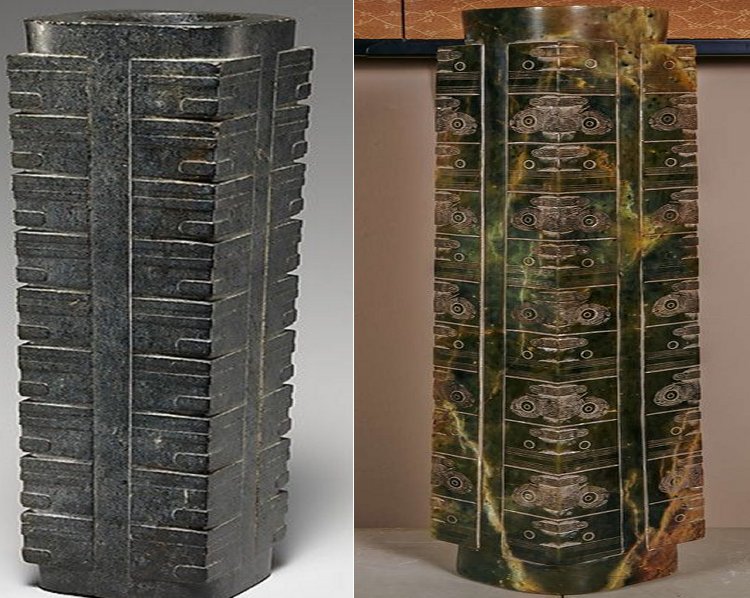 Letf: A jade cong with notches. Image: MetMuseum: Right: Another jade cong. Image: 1stdibs.com
Letf: A jade cong with notches. Image: MetMuseum: Right: Another jade cong. Image: 1stdibs.com
The jade cong must have been of great importance to the ancient Chinese, and other countries civilizations continued to manufacture the artifact. Several sophisticated examples of the cong appeared during the Shang (1600-c.1046 BC) and Zhou (1046 - 256 BC) dynasties.
Why the Liangzhu culture manufactured the jade cong?
The Liangzhu people inhabited China's Jiangsu province during the third millennium BC. Archaeologists have unearthed many extraordinary objects in royal tombs, palaces, and workshops.
All these ancient items offer evidence the Liangzhu people possessed knowledge of advanced ancient technology and produced sophisticated jade artifacts.
Unfortunately, the Liangzhu people did not have a system of writing. No records can shed light on their ancient culture, historical events, leaders, and religious beliefs.
Without written records, the meaning of jade objects, the significance of their shapes and decorations, and their purpose and function in society remain unknown.
Advanced Technology Was Used To Manufacture Jade Cong
What kind of sophisticated technology was involved in the production of jade cong?
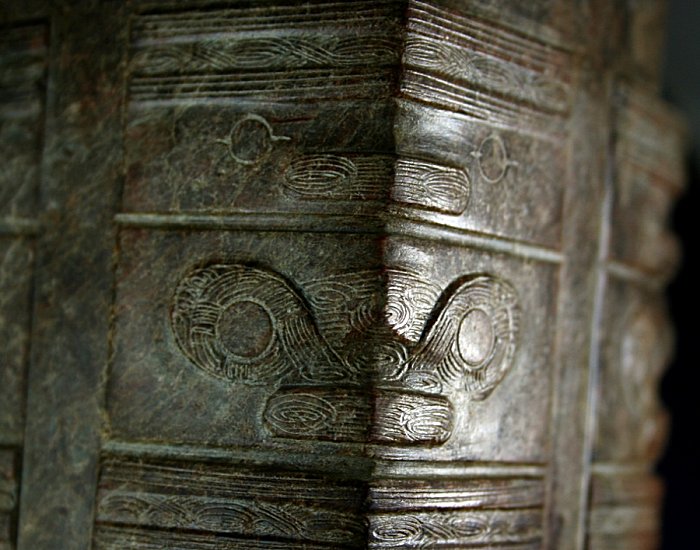 What were these mysterious jade objects? Why were these artifacts so important to the ancient Chinese? Image credit: Guwan Soucang Chinese Antiques
What were these mysterious jade objects? Why were these artifacts so important to the ancient Chinese? Image credit: Guwan Soucang Chinese Antiques
Was it perhaps an advanced drilling process that is essentially identical to the drilling process we use today? If true, it would be amazing because this Neolithic production of cong occurred in 3400-2250 BC, about 5,000 years ago.
"Some holes may have been cut using a stone gouge with the jade on a rotating turntable.
This method is thought to have been employed at a Bronze Age workshop in northern Vietnam," writes D. Hatcher Childress in his book "Ancient Technology in Peru and Bolivia."
An x-ray of one of the very tall cong shows that "a hole was made from each end using a combination of large and small drills. The arc-shaped mark was cut with a thick grinding wheel. This drill, like the others, was tubular. The two holes meet halfway along the length of the cong, but they were misaligned, barely joining.
The grinding wheel that made the arc-shaped marks would have been mounted on a rotary lathe..."
Form And Decorations Of Jade Cong
A cong is formed as a tube with a circular inner section and a squarish outer section.
The outer surface is divided horizontally or vertically, and the whole defines a hollow cylinder embedded in a partial rectangular block. A cong was produced in various sizes, shapes, and with different decorations.
Sometimes, a jade cong may be squat or taller than it is wide. The outer faces are sometimes decorated with mask-like faces, which may be related to the "taotie," a motif found on later Chinese ritual bronze vessels dating from the Shang and Zhou dynasty.
Jade Cong And Its Unknown Function And Purpose
One of this ancient artifact's most intriguing aspects is its unknown function and purpose.
 The earliest cong were produced by the Liangzhu culture (3400-2250 BC)
The earliest cong were produced by the Liangzhu culture (3400-2250 BC)
Congs shaped as square tubes with circular holes are among the most impressive yet enigmatic ancient Chinese jades. Their function and meaning are entirely unknown. The central motif used to decorate them was a simplified monster face pattern, which fitted around the square-sectioned corners. The cong was decorated with circles; some were assumed to depict eyes that were only occasionally visible.
What was the symbolism behind the eyes? Researchers are still unable to answer that question.
Ancient Chinese Produced Many Jade Artifacts
China has been the leading producer of jade objects for over 5,000 years.
Jade is a hard mineral. Most jade does not have the color and translucence expected in a gemstone. However, when early people found these particular pieces of jade, they were often inspired to craft them into unique and sometimes sacred objects.
Jade is a durable, colorful material that can be worked into shapes and highly polished. These properties make it a very desirable gemstone. Jade has been used to make jewelry items such as pendants, necklaces, rings, bracelets, earrings, beads, cabochons, tumbled stones, and other things.
These jewelry items are often made of solid jade, combined with other gems, or placed in settings made from gold, silver, or other precious metals. In addition to jewelry, jade makes small sculptures, ornaments, religious art, and small functional objects.
Although the Chinese produced several jade artifacts, many of which have been discovered, almost nothing is known about the role that jade cong played in ancient times.
Written by – A. Sutherland - AncientPages.com Senior Staff Writer
Copyright © AncientPages.com All rights reserved. This material may not be published, broadcast, rewritten or redistributed in whole or part without the express written permission of AncientPages.com
Expand for referencesMore From Ancient Pages
-
 11,000-Year-Old Human Remains Found At Heaning Wood Bone Cave In Britain
Archaeology | Jan 25, 2023
11,000-Year-Old Human Remains Found At Heaning Wood Bone Cave In Britain
Archaeology | Jan 25, 2023 -
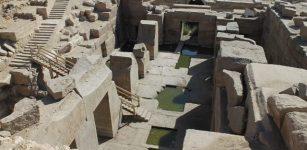 Mysterious Osirion Of Abydos Egypt – Was It An Ancient Energy Plant?
Featured Stories | Feb 26, 2020
Mysterious Osirion Of Abydos Egypt – Was It An Ancient Energy Plant?
Featured Stories | Feb 26, 2020 -
 Sacred Healing Earth Of Chimayo And The Mysterious Black Christ Crucifix
Featured Stories | May 24, 2019
Sacred Healing Earth Of Chimayo And The Mysterious Black Christ Crucifix
Featured Stories | May 24, 2019 -
 3,000-Year-Old Fortress Built By The Mysterious Votadini Tribe Discovered On Top Of Arthur’s Seat
Archaeology | Sep 11, 2020
3,000-Year-Old Fortress Built By The Mysterious Votadini Tribe Discovered On Top Of Arthur’s Seat
Archaeology | Sep 11, 2020 -
 York’s Thriving Medieval Jewish Community – New Study
Archaeology | Aug 22, 2023
York’s Thriving Medieval Jewish Community – New Study
Archaeology | Aug 22, 2023 -
 Surprising Mask Of A Human Face Found On Cistern Wall In The Ancient City Of Ptolemais
Archaeology | Jan 17, 2025
Surprising Mask Of A Human Face Found On Cistern Wall In The Ancient City Of Ptolemais
Archaeology | Jan 17, 2025 -
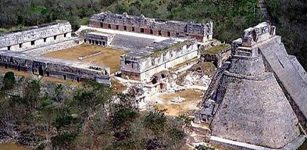 Ancient City Of Uxmal And Magnificent Pyramid Of The Magician
Featured Stories | Dec 19, 2015
Ancient City Of Uxmal And Magnificent Pyramid Of The Magician
Featured Stories | Dec 19, 2015 -
 Discovered Roman Malting Oven Could Be Evidence Of 2,000-Year-Old Beer Production In The UK
Archaeology | Apr 4, 2022
Discovered Roman Malting Oven Could Be Evidence Of 2,000-Year-Old Beer Production In The UK
Archaeology | Apr 4, 2022 -
 Carved Symbols Related To The Galician Castro Culture Discovered At Castro de San Vicenzo, Orense, Spain
Archaeology | Oct 11, 2024
Carved Symbols Related To The Galician Castro Culture Discovered At Castro de San Vicenzo, Orense, Spain
Archaeology | Oct 11, 2024 -
 Eridu: Pre-Flood City That Belonged To Enki, God Of Creation, Intelligence, Wisdom And Magic
Civilizations | Mar 27, 2017
Eridu: Pre-Flood City That Belonged To Enki, God Of Creation, Intelligence, Wisdom And Magic
Civilizations | Mar 27, 2017 -
 On This Day In History: First Wireless Transmission Of Morse Signals Sent – On Mar 12, 1896
News | Mar 12, 2017
On This Day In History: First Wireless Transmission Of Morse Signals Sent – On Mar 12, 1896
News | Mar 12, 2017 -
 Archaeologists Will Soon Excavate Biblical Site Where Ark Of The Covenant Once Stood
Archaeology | Feb 23, 2017
Archaeologists Will Soon Excavate Biblical Site Where Ark Of The Covenant Once Stood
Archaeology | Feb 23, 2017 -
 Early Neolithic High Mountain Settlers Were Busy With Complex Livestock And Farming Activities – New Study
Archaeology | Dec 22, 2023
Early Neolithic High Mountain Settlers Were Busy With Complex Livestock And Farming Activities – New Study
Archaeology | Dec 22, 2023 -
 On This Day In History: Sir Thomas Brisbane, Astronomer, Soldier And Governor Was Born – On July 23, 1773
On This Day In History | Jul 23, 2016
On This Day In History: Sir Thomas Brisbane, Astronomer, Soldier And Governor Was Born – On July 23, 1773
On This Day In History | Jul 23, 2016 -
 On This Day In History: First Public And Free School Opened For Poor Children – On Sep 15, 1616
News | Sep 15, 2016
On This Day In History: First Public And Free School Opened For Poor Children – On Sep 15, 1616
News | Sep 15, 2016 -
 Discoveries In The Hanged Man Cave, Kostkowice, Poland
News | Sep 16, 2015
Discoveries In The Hanged Man Cave, Kostkowice, Poland
News | Sep 16, 2015 -
 Riddle Of The Ancient Lost City Beneath Missouri – A Puzzling Discovery
Civilizations | Mar 21, 2022
Riddle Of The Ancient Lost City Beneath Missouri – A Puzzling Discovery
Civilizations | Mar 21, 2022 -
 Intriguing 3,400-Year-Old Multipurpose Pyramid Found In Kazakhstan
Archaeology | Nov 2, 2023
Intriguing 3,400-Year-Old Multipurpose Pyramid Found In Kazakhstan
Archaeology | Nov 2, 2023 -
 Nobel Prize: Svante Pääbo’s Ancient DNA Discoveries Offer Clues As To What Makes Us Human
DNA | Oct 12, 2022
Nobel Prize: Svante Pääbo’s Ancient DNA Discoveries Offer Clues As To What Makes Us Human
DNA | Oct 12, 2022 -
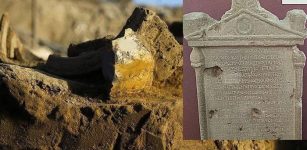 Lost Laodicea Temple And Seleucid Relics – Archaeological Search Continues
Archaeology | Jun 29, 2020
Lost Laodicea Temple And Seleucid Relics – Archaeological Search Continues
Archaeology | Jun 29, 2020
